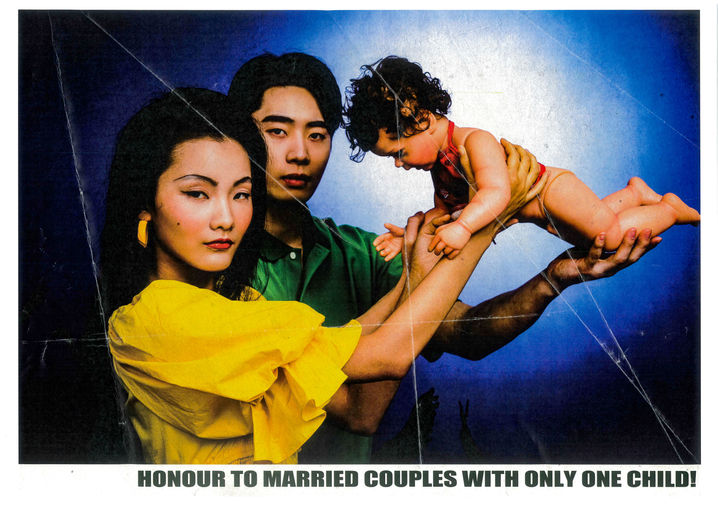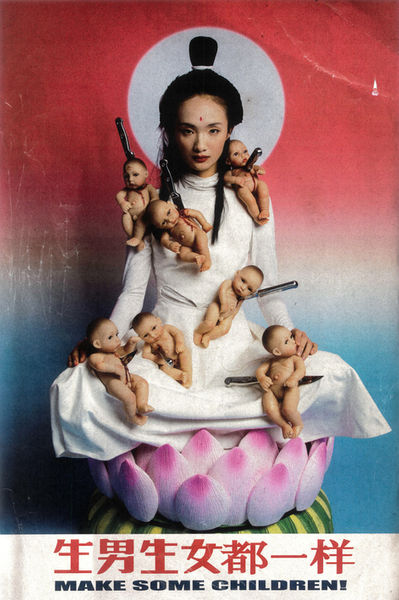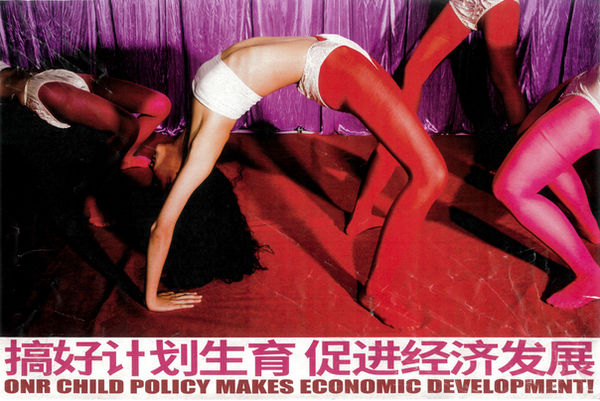
<幸存者>
Survivors

<中華優良馬>
Chinese Excellent Horse

<送子觀音>
Guanyin Of Fertility

<誰是下一個>
Who I Who Is The Next

<三個母雞的一生>
The Lifes Of Three Hens

<團圓>
Reunio

<貴子>
Precious Child



Red
This project stems from my concern about China’s fertility policies, evolving from the one-child policy to the three-child policy—a topic that, as a woman, I cannot ignore from birth to death. From the era of economic reforms to the present, China has undergone significant societal and population policy changes. Behind the rapid development centered on "efficiency" and "optimization," the striking colors and vivid images on the propaganda wall effectively masked the practices that subjected Chinese women to unwarranted violence and control.
In studying the history of family planning, I became attuned to issues such as gender selection, vested interests, and reproduction. The slogan “collective interests above all” was wrapped in an aesthetic unique to this ethnicity, with the beautiful red color embodying everyone’s hopes for the future, becoming the backdrop of this period. Consequently, I focus on a fundamental question: Does collective interest necessarily have to be built on the sacrifice of individual happiness? This project aims to explore the relationships between individuals and the collective and how to balance collective and individual rights in a cultural context that emphasizes collective interests.